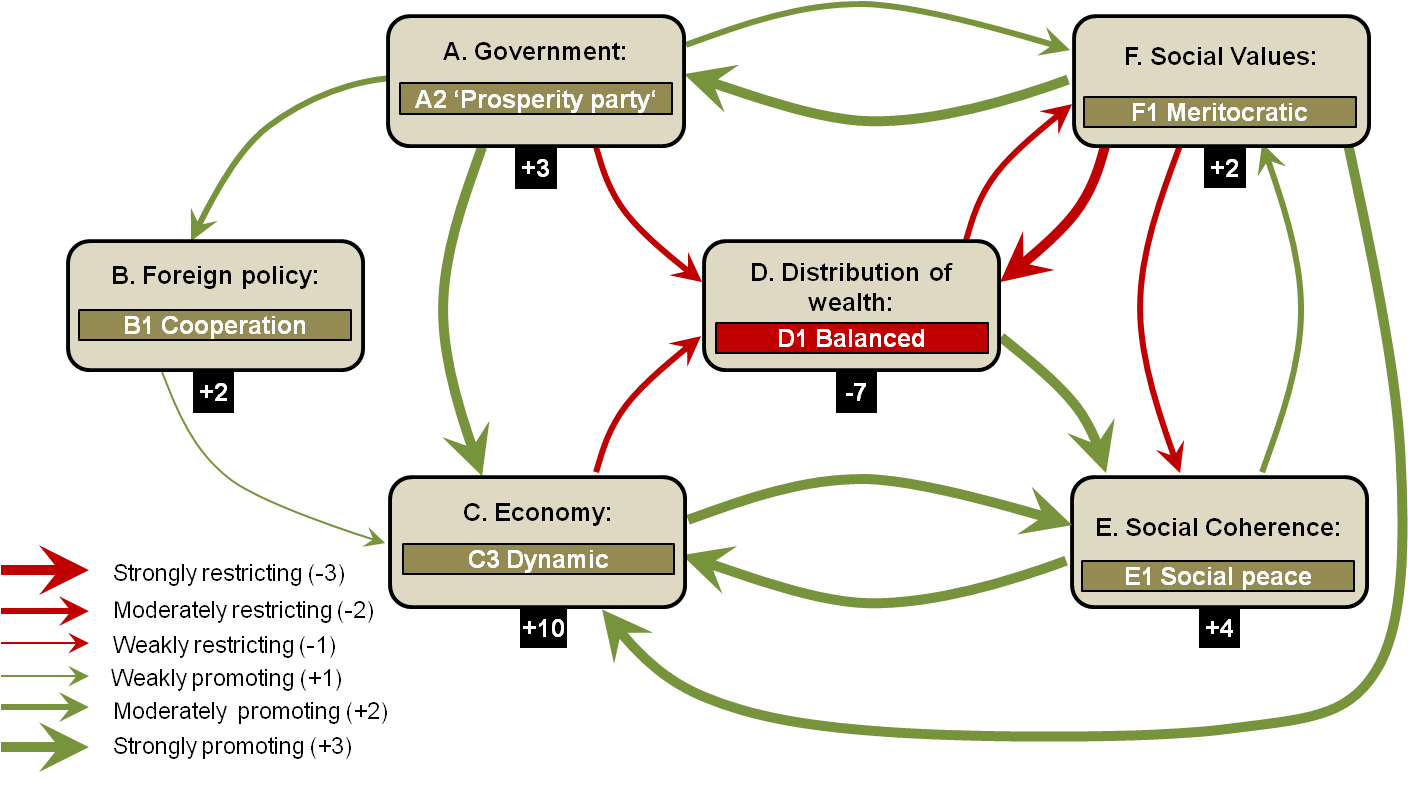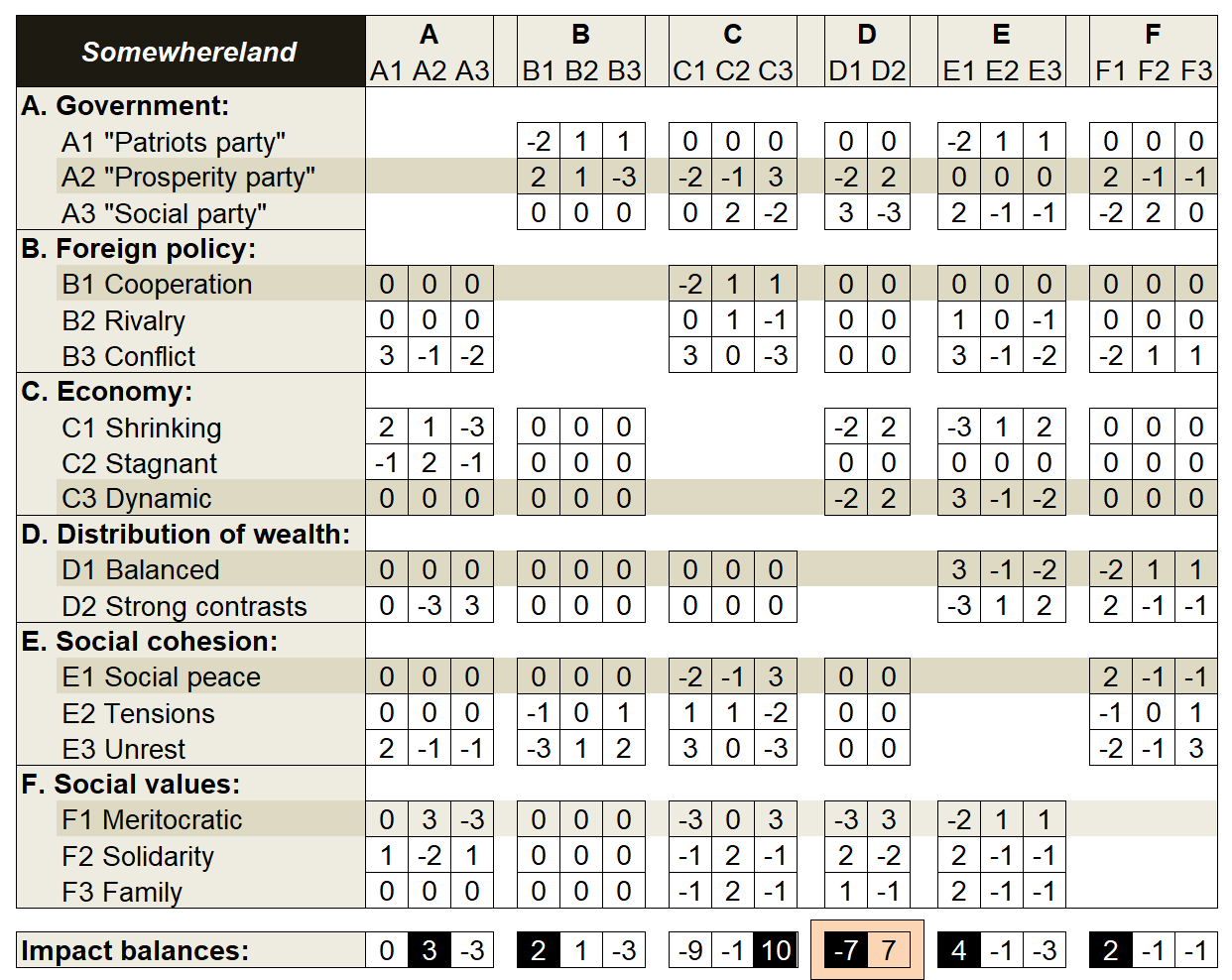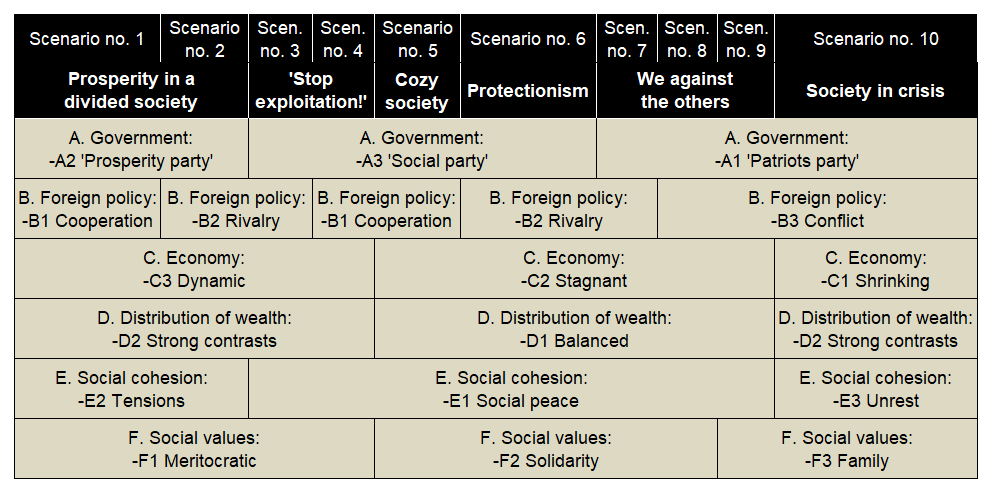| |
|
CIB Analysis - Step-by-Step
| A. Government: | A2 'Prosperity party' |
| B. Foreign policy: | B1 Cooperation |
| C. Economy: | C3 Dynamic |
| D. Distribution of wealth: | D1 Balanced |
| E. Social coherence: | E1 Social peace |
| F. Social values: | F1 Meritocratic |




| < Step 3 |
| Imprint | Data privacy | Copyright |